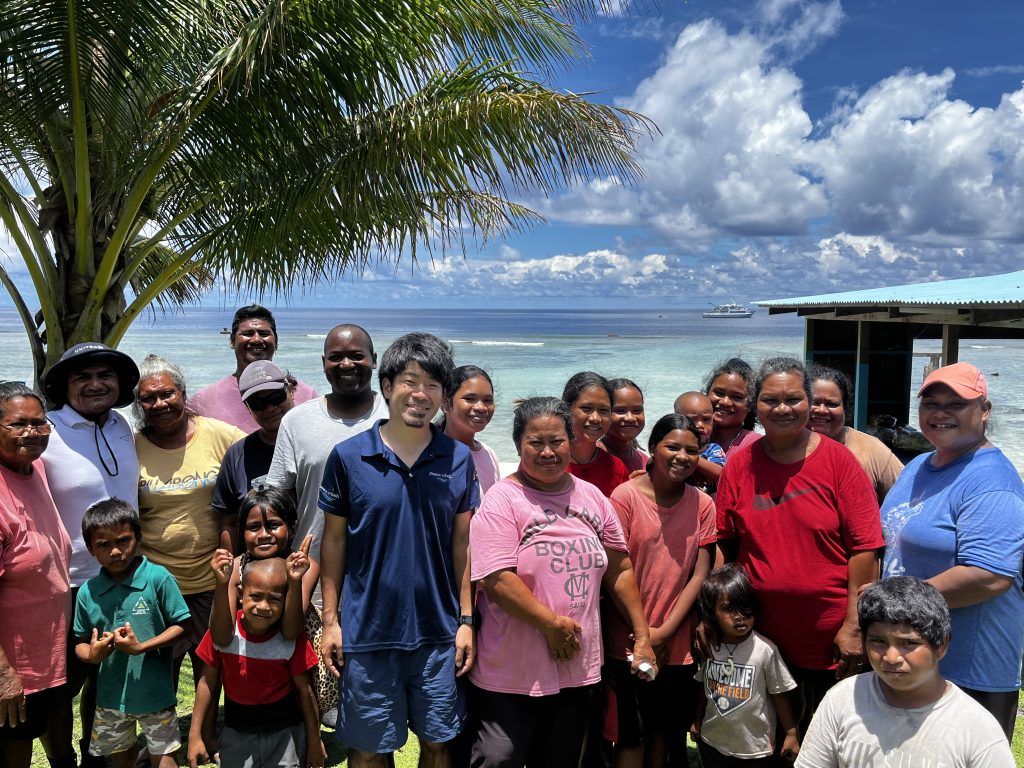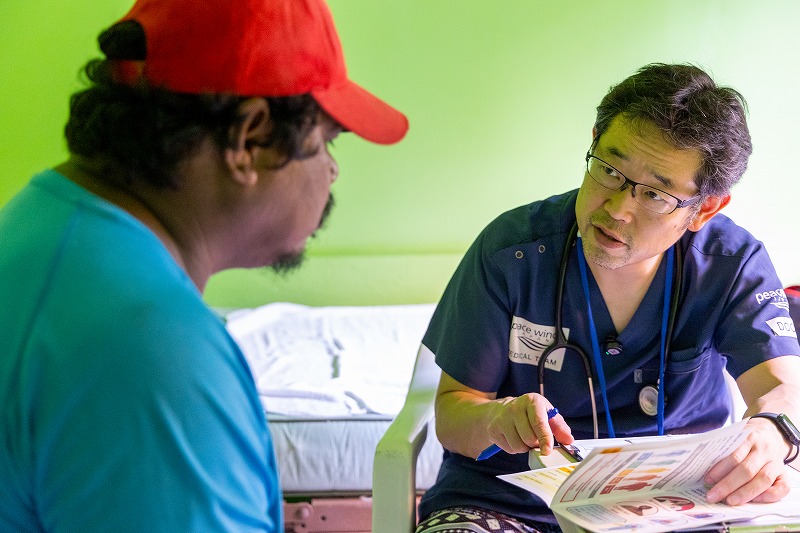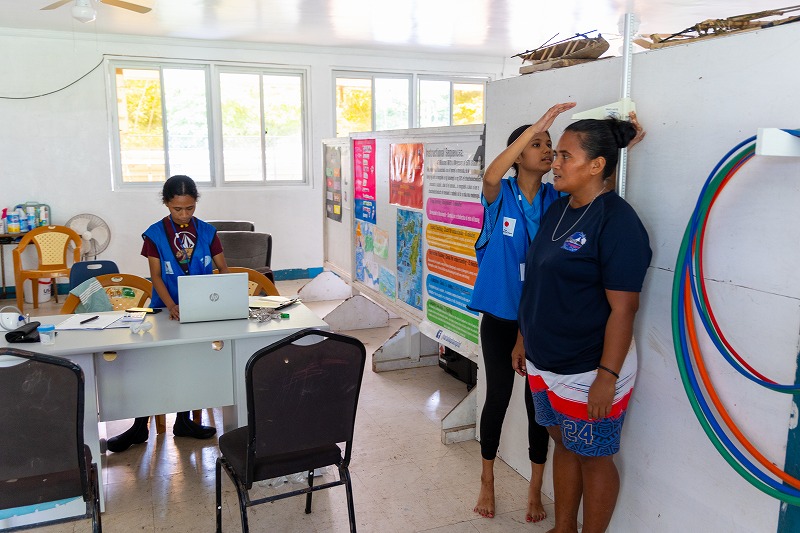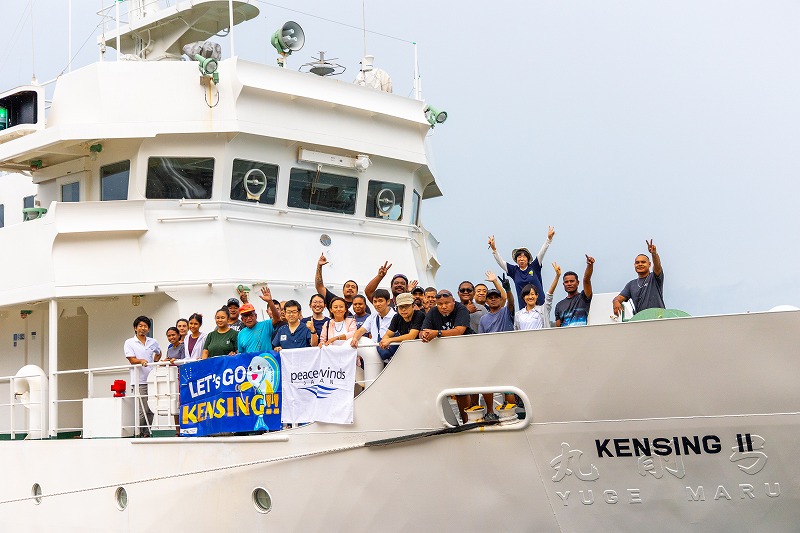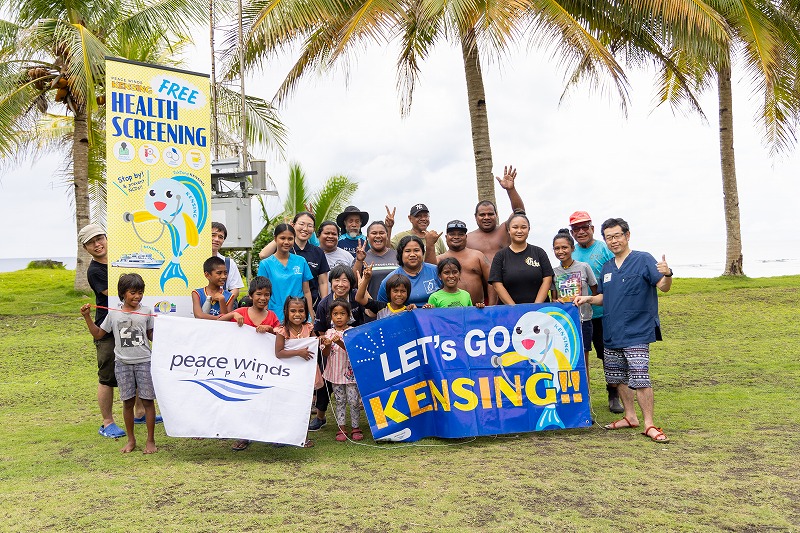Strengthening Healthcare and Community Connections Between Remote Islands: a Conversation with Country Representative of Peace Winds Palau
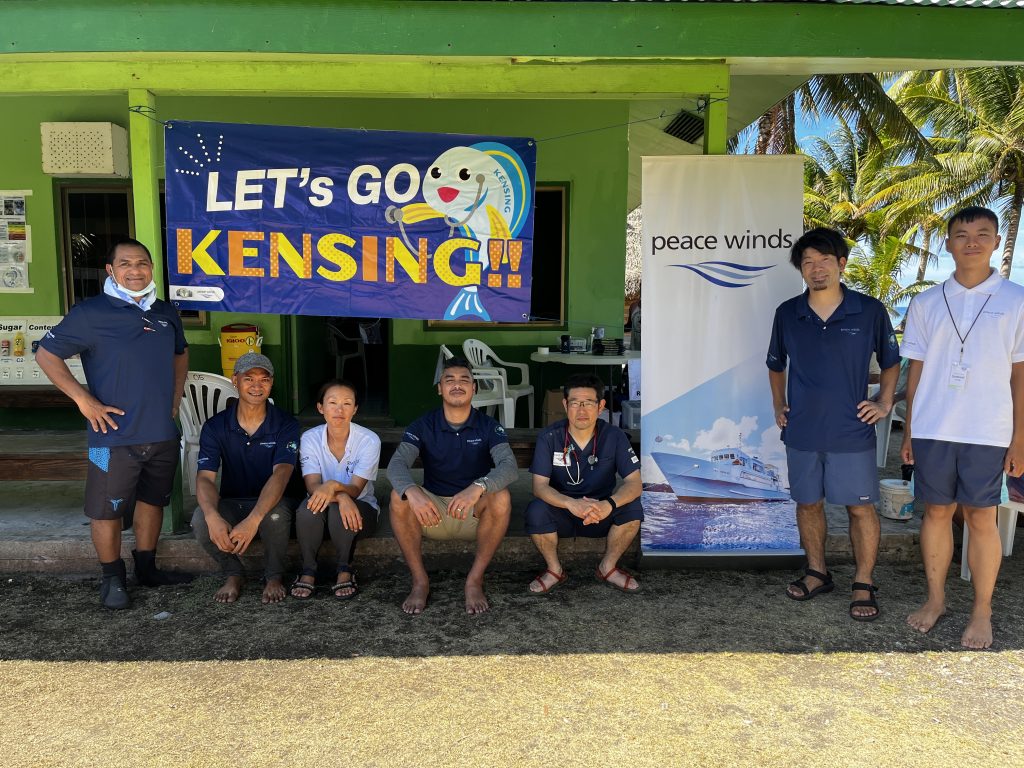
Meet Amma Nobumichi, Country Representative for Peace Winds Palau. Amma is from Japan, but he began working in Palau in 2021 when Peace Winds set out to bring healthcare to some of the country’s most remote islands. A shortage of healthcare workers, only one national hospital on the main island of Koror, and the difficulty of traveling between islands all mean that many Palauans do not have access to routine healthcare. As a result, non-communicable diseases (NCDs) like hypertension, diabetes, and heart disease often go undiagnosed.
“When we looked into the issues in Palau, NCDs were the biggest,” Amma says about the development of the program. But he and his team are working to change this.
Amma’s job is to coordinate with doctors and nurses from Japan and Palau to bring both health screenings and educational activities to the islands. They do this with the help of the Kensing II, a medical ship equipped with supplies to conduct basic and in-depth health screenings. Amma says that while all the patients the team sees are very supportive of the initiative, nowhere is their work more appreciated than on Palau’s remote Southwest Islands.
“I feel the Southwest Islands are the place where Peace Winds can really contribute the most,” he says.
It takes more than one full day to reach these islands by ship, and though most have health clinics, the clinics do not have doctors or nurses on staff and are typically under-resourced. This means that islanders rely heavily on Peace Winds for basic health checks.
Amma says that the new Kensing II, which replaced the original Kensing in September of last year, has increased the team’s capacity to travel to the Southwest Islands more regularly. He hopes that in the coming year, his team will be able to travel there every few months.
“The Kensing II is designed to travel longer distances, and the living environment is more comfortable. We have a more trustworthy ship so that we can bring more cargo, more people, more opportunity to contribute to the health of the Southwest Islands.”
One of the biggest challenges for these islanders is a policy of the National Hospital in Palau that restricts prescription medications to a one-month supply. Amma and his team have seen firsthand the dangerous consequences of this.
“One time when we went there, there was a patient who hadn’t taken their medication for two or three months, so their blood pressure was very high, 180 / 110 mmHg, which is a very, very risky number. But they didn’t have any medication to help them.”
In addition to coordinating health screenings, part of Amma’s job involves working closely with government officials to advocate for patients like these.
“We have worked with the director of the National Hospital and the Ministry of Health to encourage them to allow three-month prescriptions. So hopefully this year or next year they will be able to change the policy at least for the Southwest Islands.”
Looking ahead, the Kensing II offers opportunities to meet many other pressing needs in Palau besides NCD detection and prevention.
“The other major pillar of this project is transportation,” Amma says. “So of course we transport medical personnel, but besides that, we can also bring cargo. For example, there is a need to repair community health centers on the Southwest Islands, so we could transport the construction materials. Or we can even help with other third-party projects like scientific research.”
Peace Winds plans to team up with Island Conservation, a U.S.-based nonprofit, to use the Kensing II to transport bait and traps to rid some of the Southwest Islands of an invasive rat population that threatens its native species.
“Or, in Koror, we are seeing a demand for fruits and vegetables,” Amma says, explaining that needs are not limited to the Southwest Islands. “People say they want to have healthy food, but there aren’t that many opportunities to eat it. It’s very expensive. So maybe that will be our next project–supporting nutrition, which is closely related to what we’re doing for health.”
For now, Amma is enjoying being part of the friendly, tight-knit community that is characteristic of such a small island country. He says he feels like his team has had a big impact and made many important connections over the last four years.
“A small action in Japan is a small action, but a small action in Palau is a big action,” he says. “It’s very easy to see the results of our work.”
The team recently made its first trip to the Southwest Islands in two years, and we look forward to making healthcare accessible for even more Palauans in 2025. To stay updated on our work in Palau and find healthy recipes, follow Peace Winds Palau on Facebook. You can also donate to this project through our GlobalGiving fundraiser. We appreciate your continued support.
